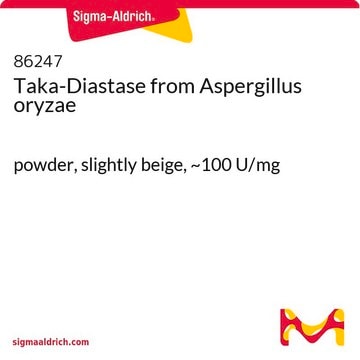T25305
Tetraphenylarsonium(V) chloride hydrate
97%
Sinonimo/i:
Phenylarsonium chloride, Tetraphenylarsenic chloride
About This Item
Prodotti consigliati
Saggio
97%
Impiego in reazioni chimiche
core: arsenic
reagent type: catalyst
Punto di fusione
258-260 °C (lit.)
Stringa SMILE
O.[Cl-].c1ccc(cc1)[As+](c2ccccc2)(c3ccccc3)c4ccccc4
InChI
1S/C24H20As.ClH.H2O/c1-5-13-21(14-6-1)25(22-15-7-2-8-16-22,23-17-9-3-10-18-23)24-19-11-4-12-20-24;;/h1-20H;1H;1H2/q+1;;/p-1
NGDWSDTZKCSLRK-UHFFFAOYSA-M
Categorie correlate
Applicazioni
Avvertenze
Danger
Indicazioni di pericolo
Consigli di prudenza
Classi di pericolo
Acute Tox. 3 Inhalation - Acute Tox. 3 Oral - Aquatic Acute 1 - Aquatic Chronic 1
Codice della classe di stoccaggio
6.1C - Combustible acute toxic Cat.3 / toxic compounds or compounds which causing chronic effects
Classe di pericolosità dell'acqua (WGK)
WGK 3
Punto d’infiammabilità (°F)
Not applicable
Punto d’infiammabilità (°C)
Not applicable
Certificati d'analisi (COA)
Cerca il Certificati d'analisi (COA) digitando il numero di lotto/batch corrispondente. I numeri di lotto o di batch sono stampati sull'etichetta dei prodotti dopo la parola ‘Lotto’ o ‘Batch’.
Possiedi già questo prodotto?
I documenti relativi ai prodotti acquistati recentemente sono disponibili nell’Archivio dei documenti.
Il team dei nostri ricercatori vanta grande esperienza in tutte le aree della ricerca quali Life Science, scienza dei materiali, sintesi chimica, cromatografia, discipline analitiche, ecc..
Contatta l'Assistenza Tecnica.









